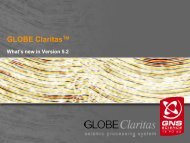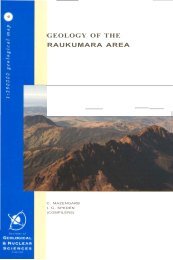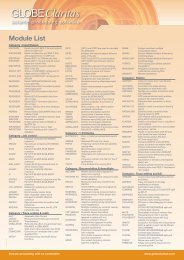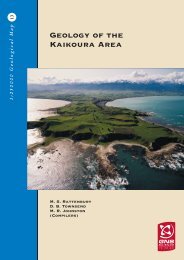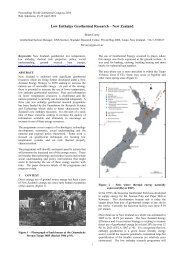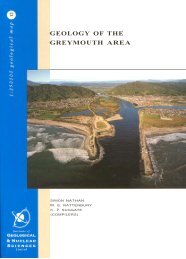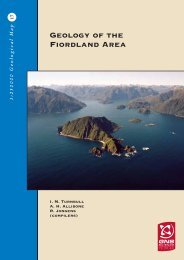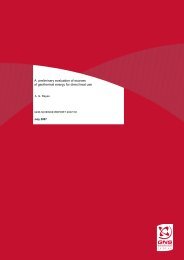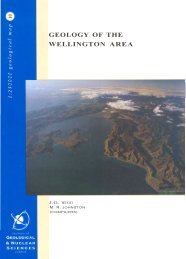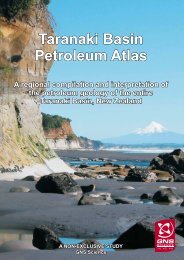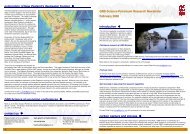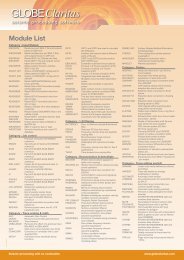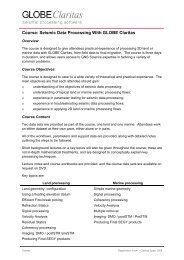GNS Science Consultancy Report 2006/0XX
GNS Science Consultancy Report 2006/0XX
GNS Science Consultancy Report 2006/0XX
Create successful ePaper yourself
Turn your PDF publications into a flip-book with our unique Google optimized e-Paper software.
1.0 INTRODUCTION<br />
With the technological advances in the last 20 years the definition of an economically viable<br />
geothermal resource has broadened to a resource that extracts heat from the rock or<br />
circulating aquifer waters at temperatures ranging from as low as 4 o C (Lund and Freeston,<br />
2001) to as high as sub-magmatic (400 o C) and from about 15m to >3500m depths. At<br />
shallow depths and temperatures of 10-35 o C heat can be harnessed from the ground or<br />
circulating water in boreholes or warm water in abandoned mines using ground source heat<br />
pumps (Lund et al, 2005). In Central and Northern Europe, for example, all heat energy<br />
stored below about 15m from the surface is considered geothermal energy (Rybach and<br />
Sanner, 2000).<br />
For some of the unconventional sources of geothermal energy, such as heat from<br />
sedimentary basins and hot dry rock (HDR), permeability or the volume of circulating fluids<br />
may be too low to economically extract heat. To increase the productivity and lifetime of<br />
these marginal geothermal sources for power generation, enhanced or engineered<br />
geothermal systems (EGS) technology may be required where, essentially, low permeability<br />
hot rock at depth is artificially fractured and fluid is introduced into the newly-fractured rock<br />
where it is heated by conduction. The heated fluids are recirculated to the surface by pumps<br />
and the heat extracted by a heat exchanger (e.g. Smith, 1983; White, 1983).<br />
1.1 GEOTHERMAL RESOURCES IN NEW ZEALAND<br />
There are conventional and non-conventional sources of geothermal energy for power<br />
generation and direct heat utilisation in New Zealand (Figure 1) ranging in temperature from<br />
about 12 to 15 o C at about 15m to as high as >330 o C at >3,500m. Power can be generated<br />
by steam turbines or by binary cycle systems using the Organic Rankine Cycle (ORC) where<br />
the working organic fluid has a low boiling temperature such as isopentane, or the Kalina<br />
Cycle which uses ammonia/water.<br />
The newest system is called the NE (Natural Energy) Engine that operates on hot and cold<br />
water and uses liquid CO 2 as a working fluid in the heat exchanger engine<br />
(www.fossil.energy.gov).<br />
Conventional sources include (1) high enthalpy hot spring systems in the Taupo Volcanic<br />
Zone (TVZ) and Ngawha in Northland some of which are now harnessed for power<br />
production, (2) waste-water from high enthalpy power-generating systems such as Wairakei,<br />
Mokai, Ohaaki-Broadlands, Kawerau, Rotokawa and Ngawha and (3) hot spring systems<br />
outside the Taupo Volcanic Zone and Ngawha and including springs in the North Island,<br />
islands in the Bay of Plenty and Hauraki Gulf and in the South Island (Figure 2).<br />
Nonconventional sources of geothermal energy include: (1) most of the TVZ outside high<br />
enthalpy geothermal systems, where thermal gradients range from 40 o C/km to >50 o C/km but<br />
permeability low, (2) 12 o C to 170 o C waters in abandoned oil and gas (hydrocarbon) wells, (3)<br />
heated waters in abandoned flooded coal and mineral mines, (4) conductive heat from<br />
shallow depths (70 mW/m 2 ) sedimentary basins, metamorphic terrain and rapidly<br />
rising regions of the country such as the Raukumara Peninsula (Mazengarb and Speden,<br />
2000) and the Southern Alps (Allis and Shi, 1995) and regions outside high heat flow<br />
regions. The location of some of the nonconventional heat sources available in New Zealand<br />
are shown in Figure 2.<br />
<strong>GNS</strong> <strong>Science</strong> <strong>Report</strong> 2007/23 1



